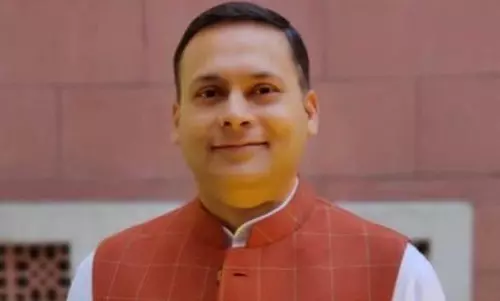
Another 'Kerala Model' wins laurels
text_fieldsKerala has been ranked first in the education quality index of NITI Ayog for a second consecutive year. Kerala secured this top recognition in the report, the School Education Quality Index 2019, prepared using 30 parameters by NITI Ayog in collaboration with Ministry of Human Resource & Development (MHRD) and World Bank. The key indicators used in the assessment were learning outcomes, access outcomes and infrastructure and facilities for outcomes.
The report released now covers the academic year 2016-17. Kerala scored 82.17 points in the rating. In previous year this was 77.64 which is certainly a signal achievement, and comes closely after Kerala standing first in NITI Ayog's ranking for health sector that was made a few months ago. In other words, in the core domains of fundamental development, i.e. education and health, Kerala is undoubtedly surging forward. Even with a preliminary review of the two reports, the progress can be seen as far ahead of other states. The government and related departments indeed deserve kudos for the distinction earned.
In fact this first rank gives no surprise, for this is something Kerala has expected and naturally deserved too. More recenly, especially under the current LDF government, the interventions in public education sector have borne fruit in many ways. The state has now started a reversal from private English medium schools to public schools. That has seen nearly 5 lakh students being added to this segment of the school sector. This was made possible by the government's intensive drive for public schools by making singificant improvements in the infrastructure, including addition of a remarkable number of smart classrooms.
As per figures, the state now has 45,000 hi-tech classrooms. In order to boost the efficiency of classroom activities, hi-tech labs have also been set up in many places. Further, projects to promote extra-curricular activities like 'Mikavu' (meaning 'competence') have also become active. Thus, our education department is able to sysematically implement programmes to identify the academic and creative skills of the children and to foster them. The ranking achieved now can be deemed as the reflection of such initiatives. Text books, uniform and mid-day meal are being provided free to the students. Although other states too have such schemes, they are far from efficient. In states like Uttar Pradesh, which stand at the lower end of NITI Ayog's ranking, there have been reports of children dropping out for want of mid-day meal. That is where Kerala presents its creditable model. Thus by bringing students into government schools through the public education drive, the government ensures both education and health of the children. Therefore, it would not be an exaggeration to describe this achievement of Kerala as a 'second model'.
Even at this hour of pride and glory, certain other aspects related to education call for attention. One of them is why Kerala's achievements at school-level education are not replicated in higher education. If we recall as a guide the 2018 research report prepared by MHRD based on various criteria, there is not a single college from Kerala in the top twenty rank list. In the list of medical colleges alone, the list of twenty five leading colleges does not have any from Kerala. The only redeeming exceptions are that among the best management studies institutions IIM-Kozhikode got ranked third and among meritorious colleges University College Thiruvananthapuram came eighteenth. When compared to the gains made in school education these are far from impressive. How this happens is to be studied on urgent basis. Another issue is that all the successful candidates who pass higher secondary level, do not get equal opportunity for higher studies. It has become an annual spectacle that in spite of scoring high marks, students in Malabar run earth and heaven for admission to Plus-Two and degree studies. True, after series of complaints and clamour, the number of seats get marginally increased on year-on-year basis, but statistics tell that even they are not adequate to meet the demand. In other words, the gains made in school level education get subsequently wiped out for various reasons. The way to attain a comprehensive thrust in education is to get at the root cause of this and implement solutions. May the recently earned distinctions be a prompt for such endeavours.























